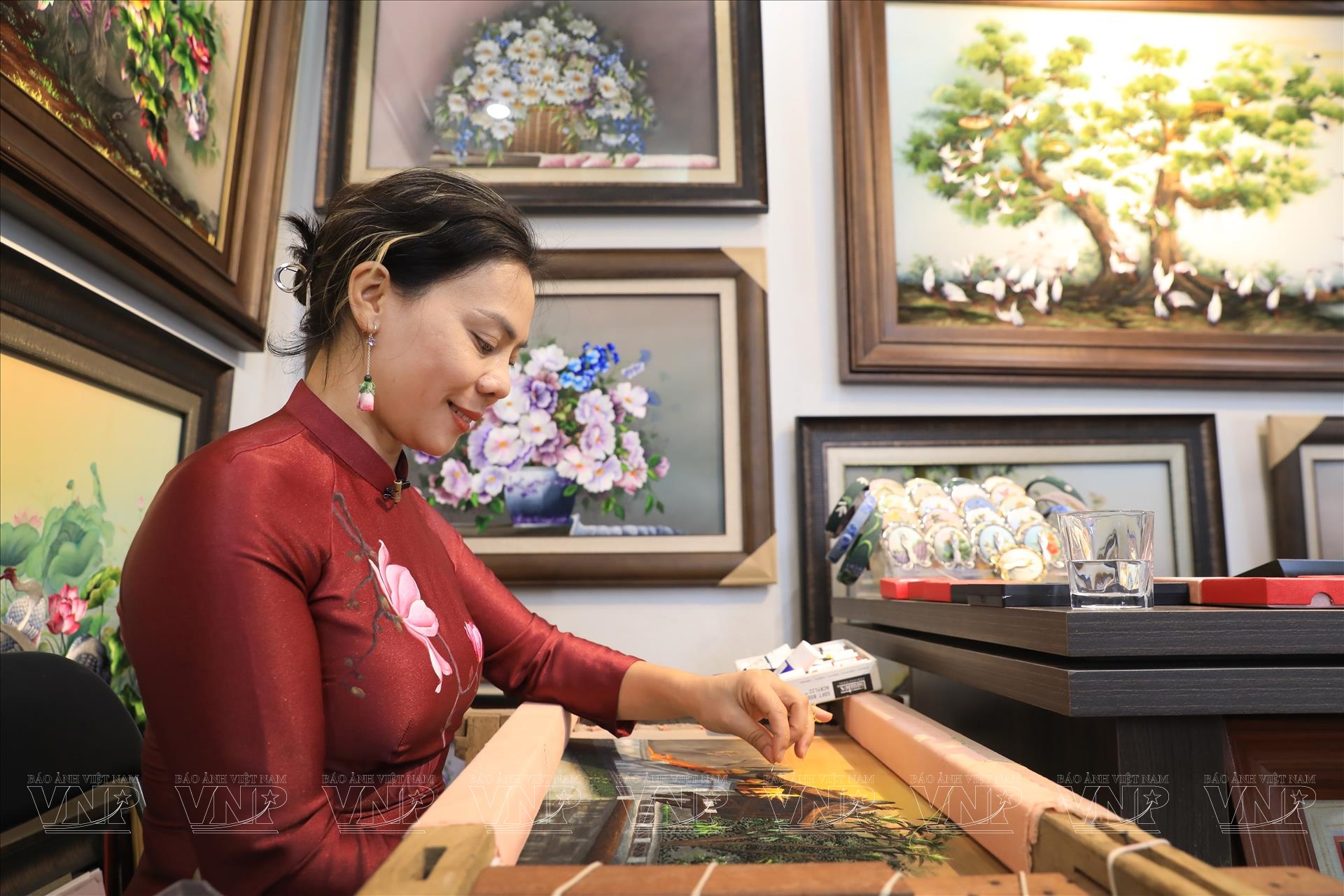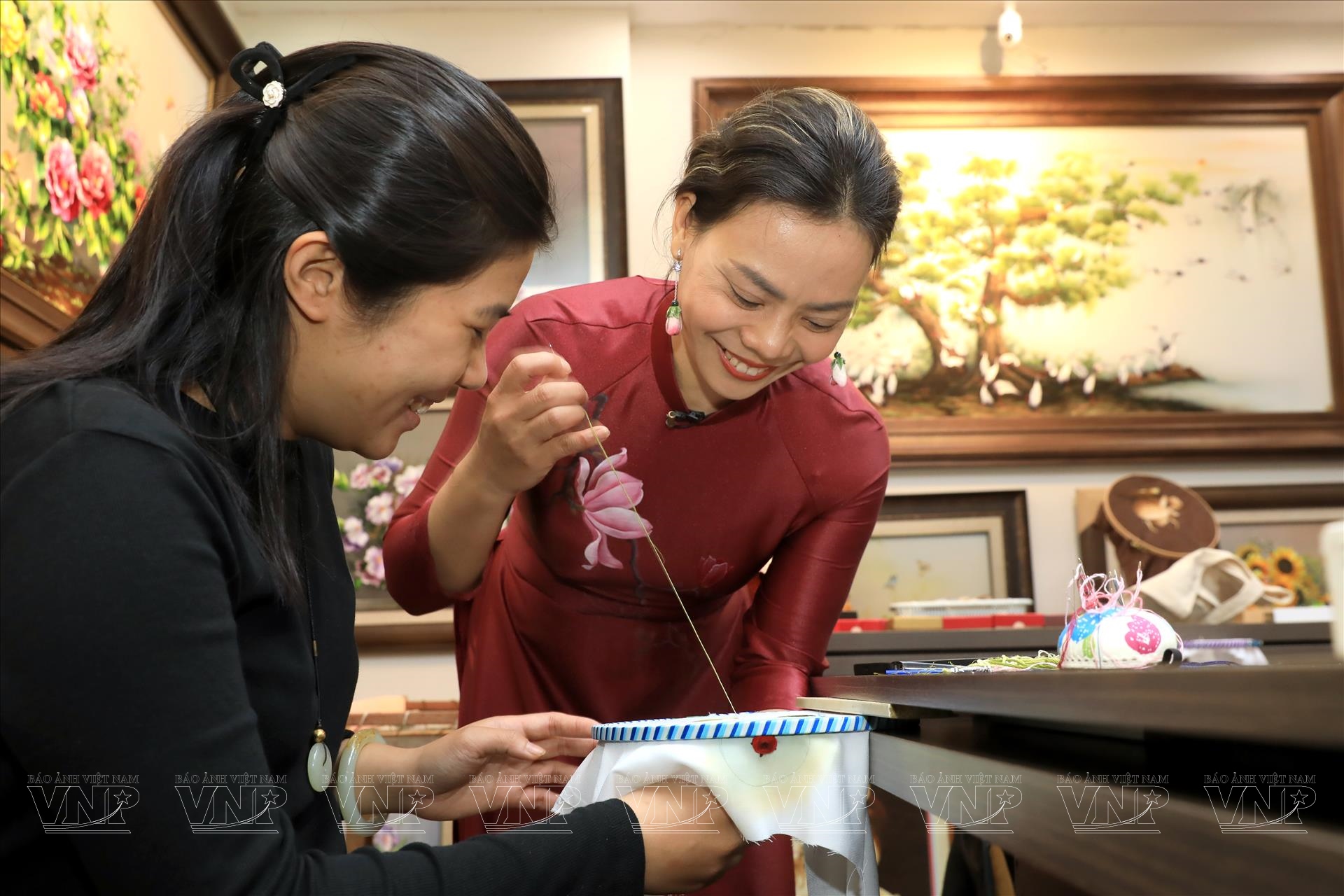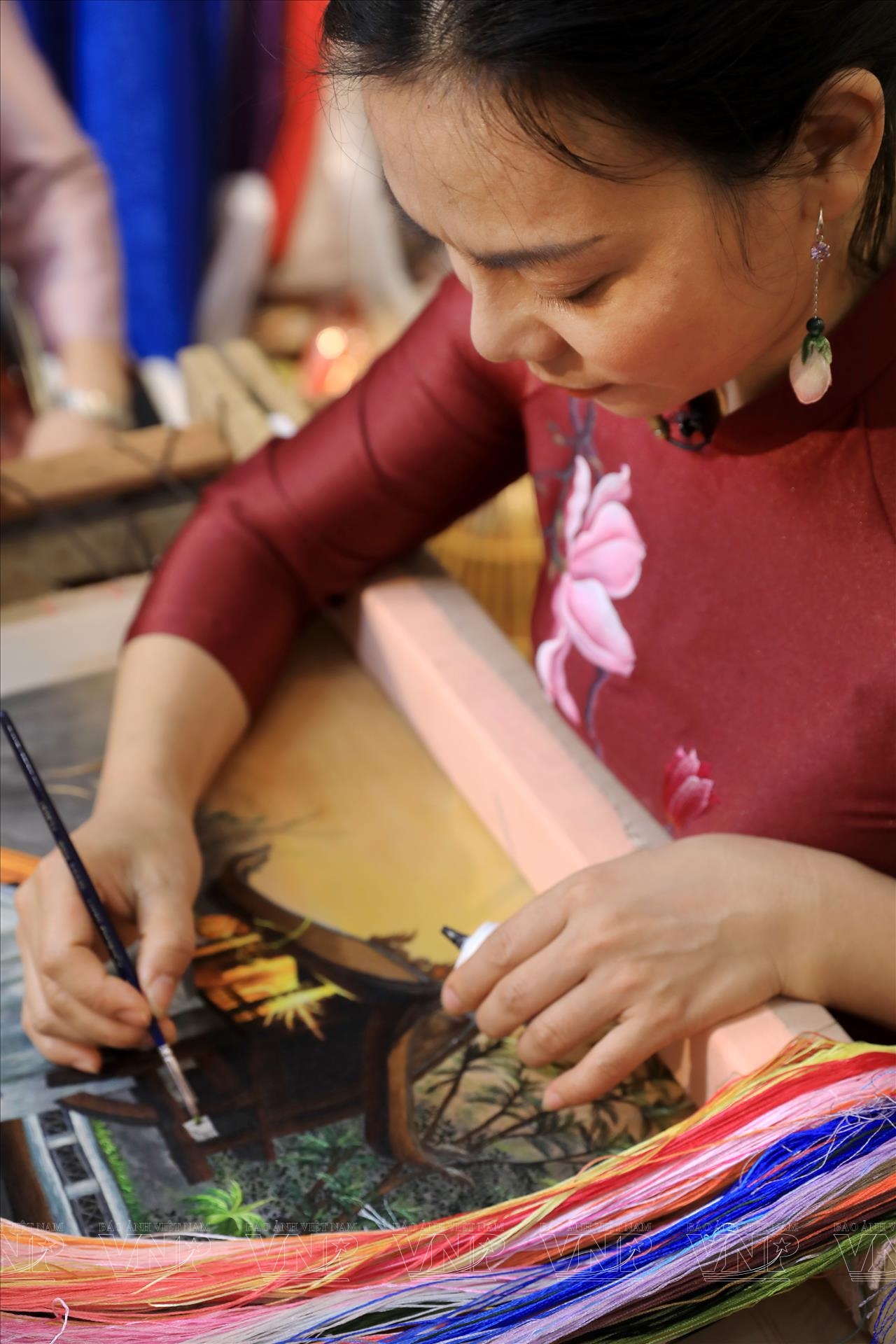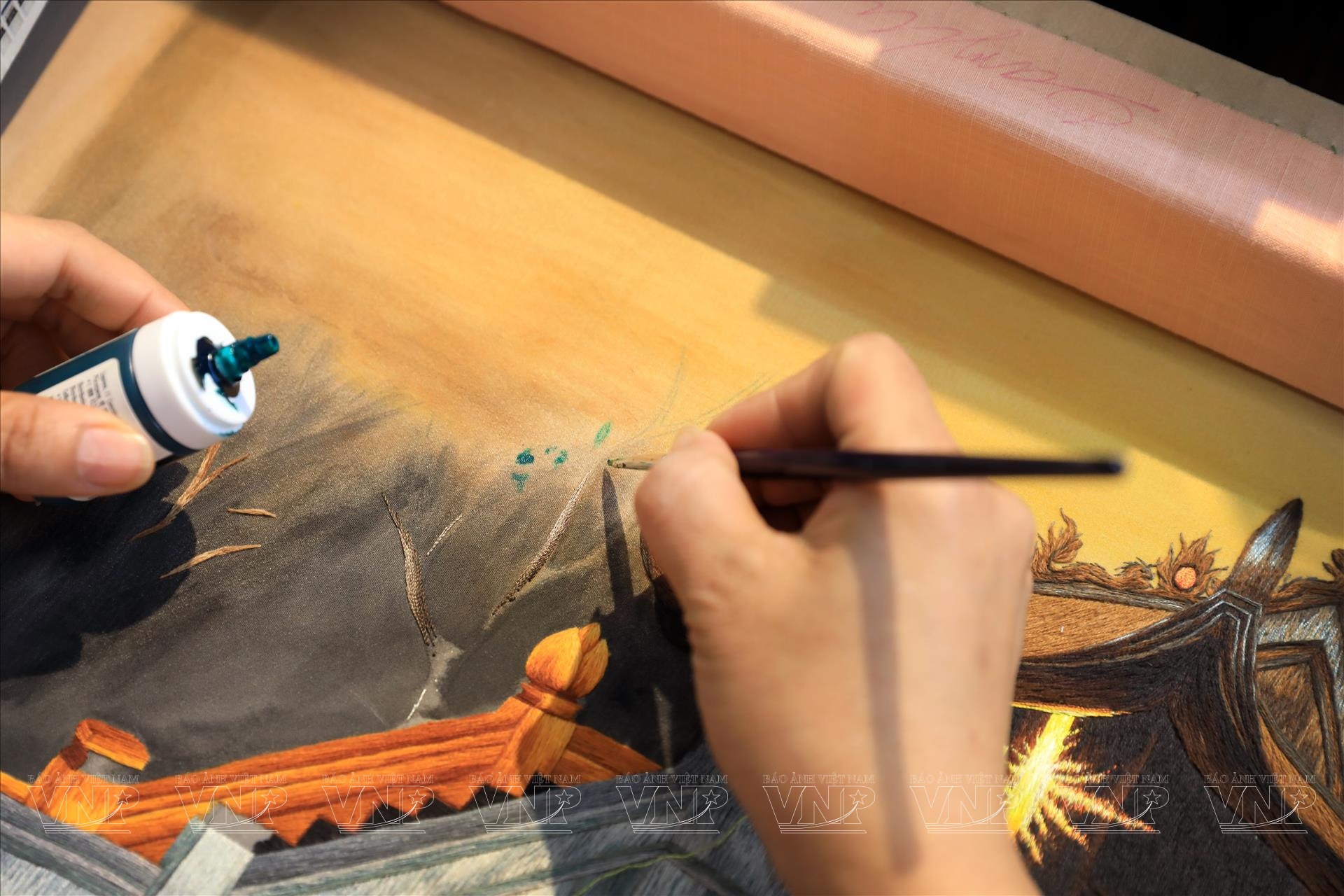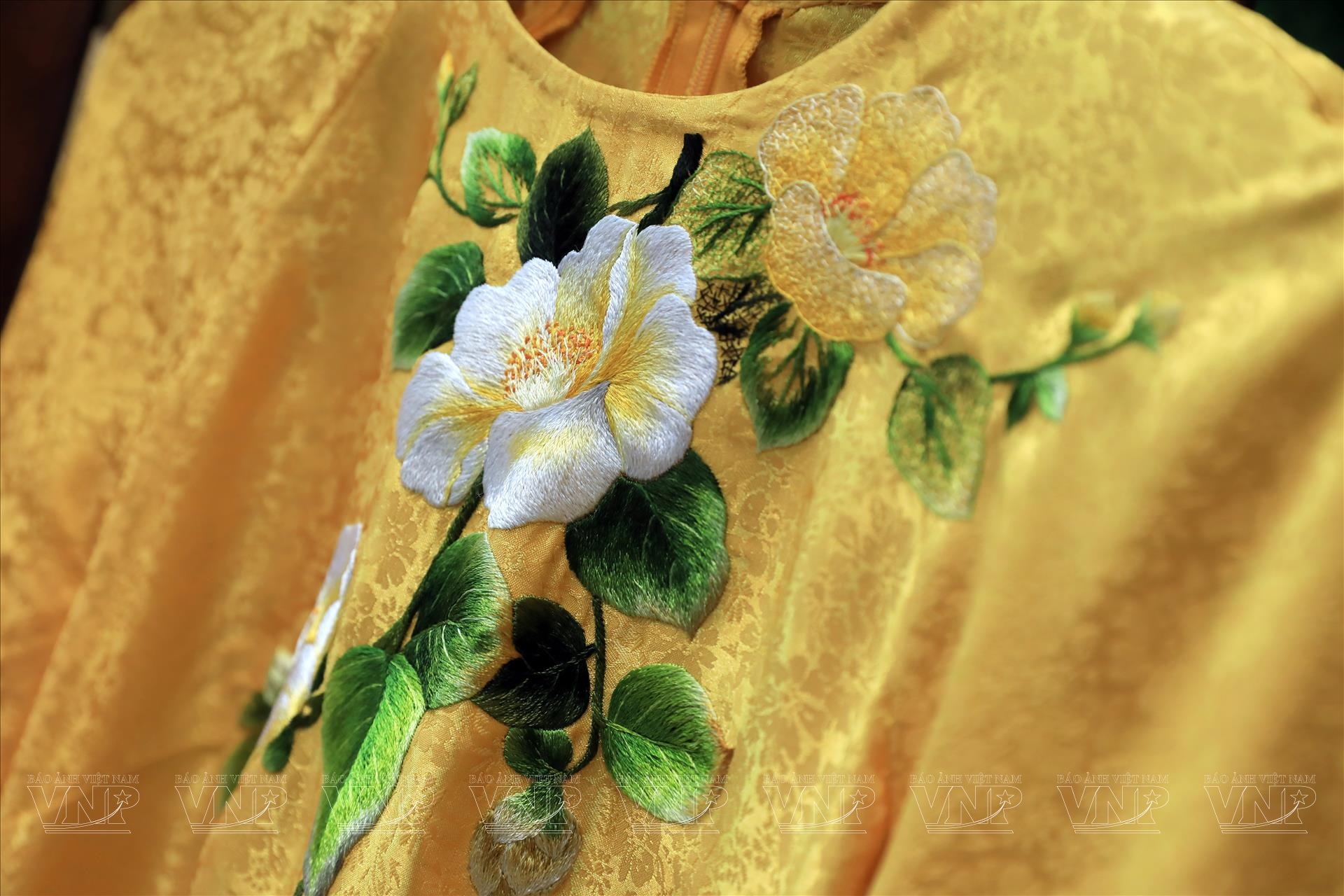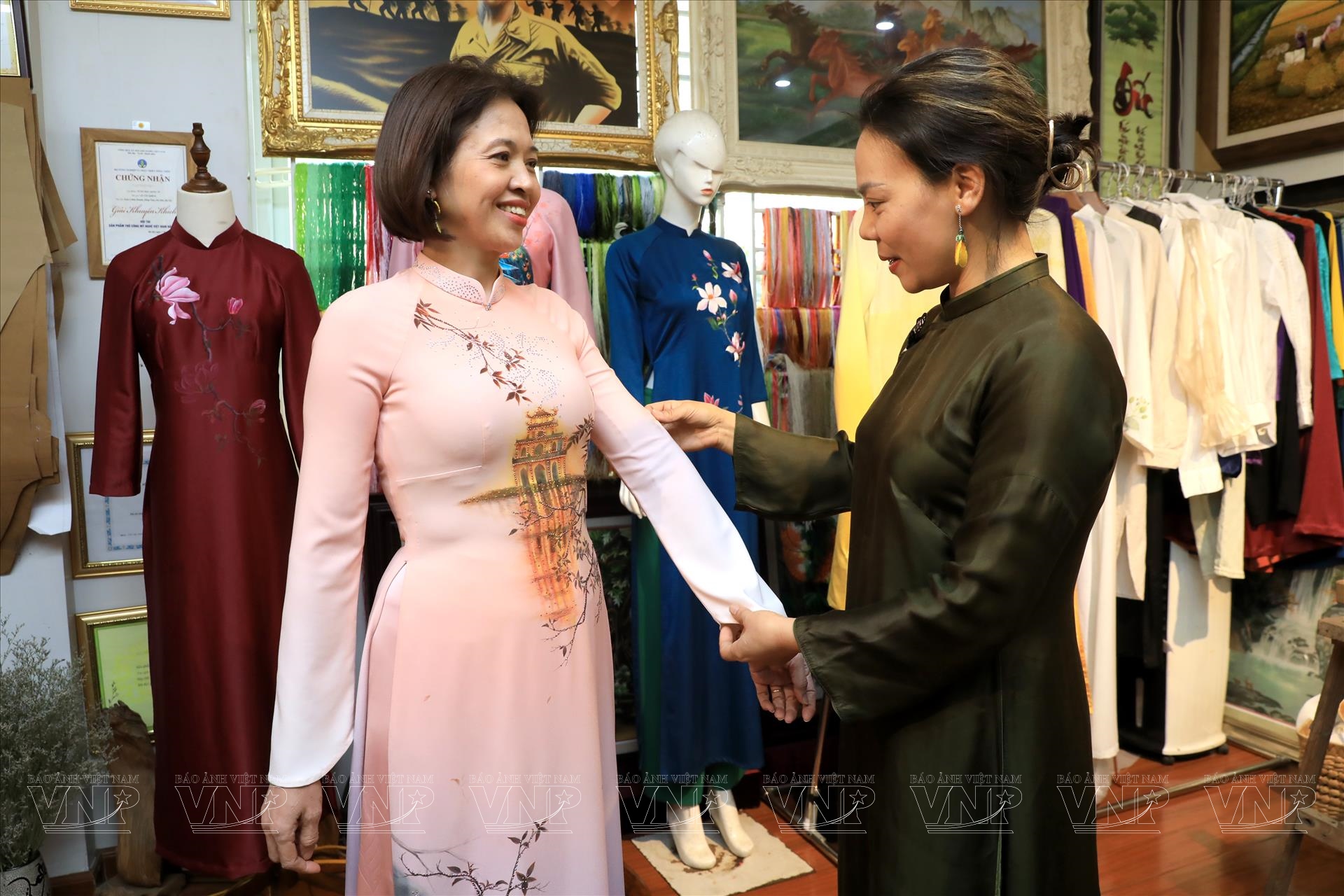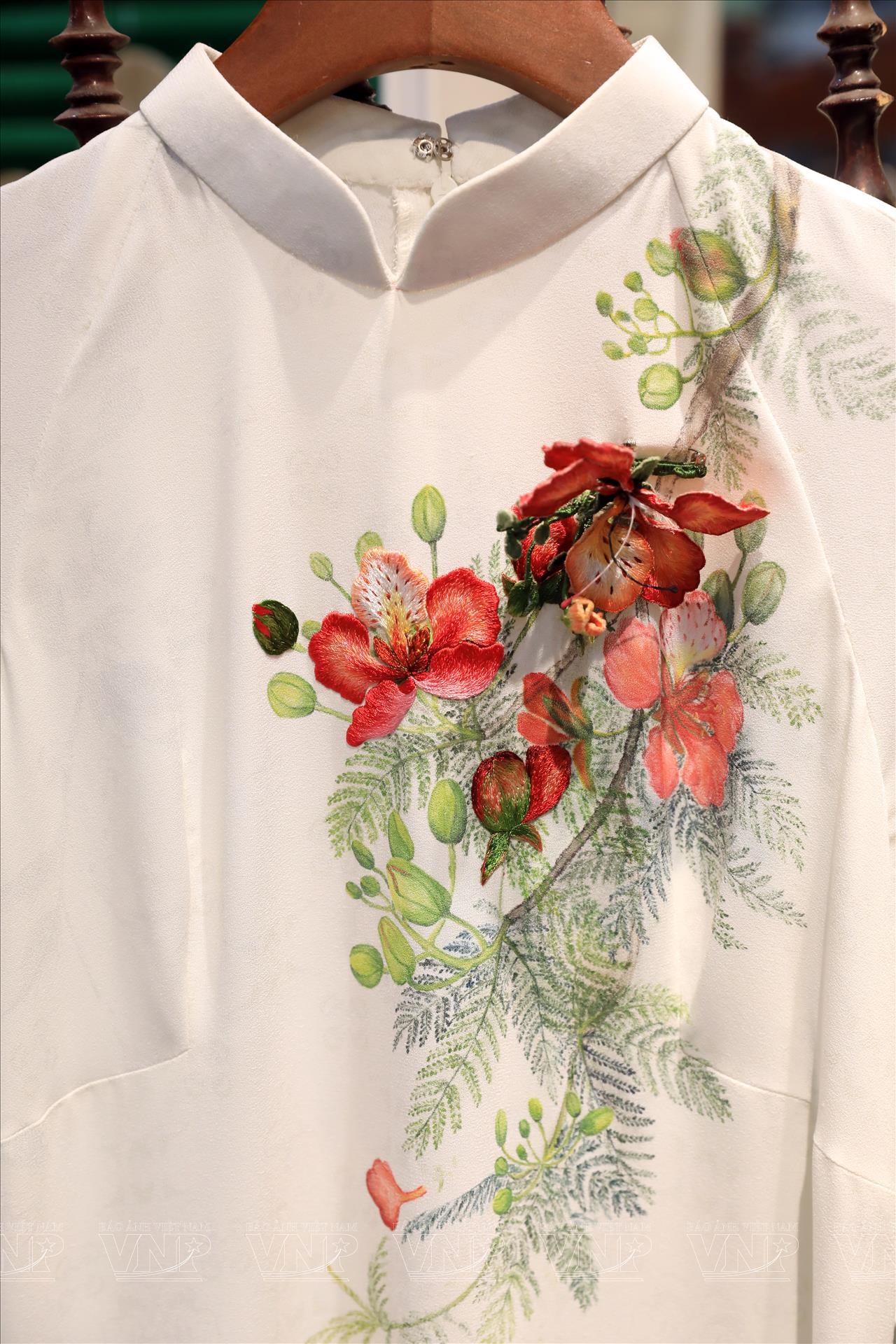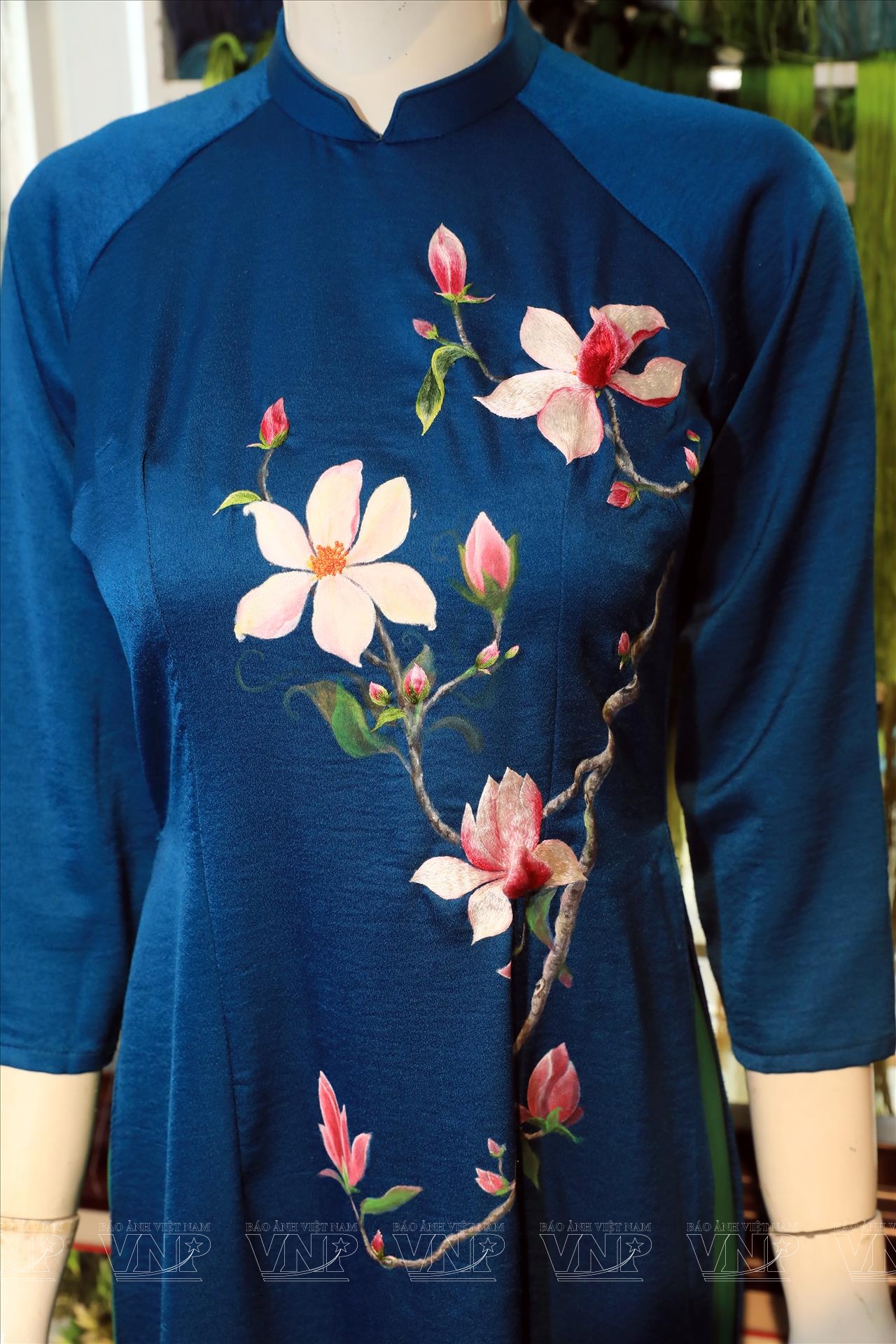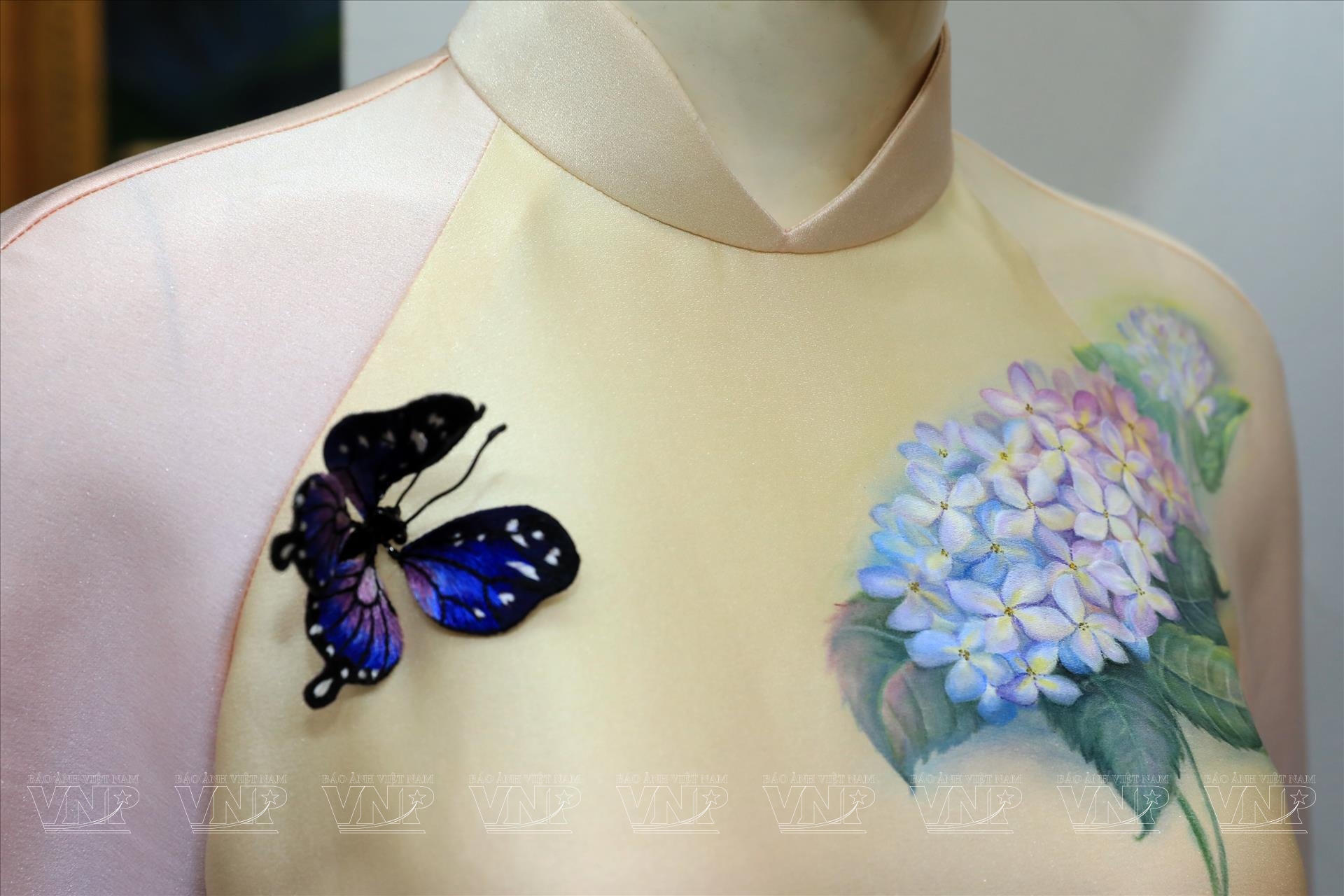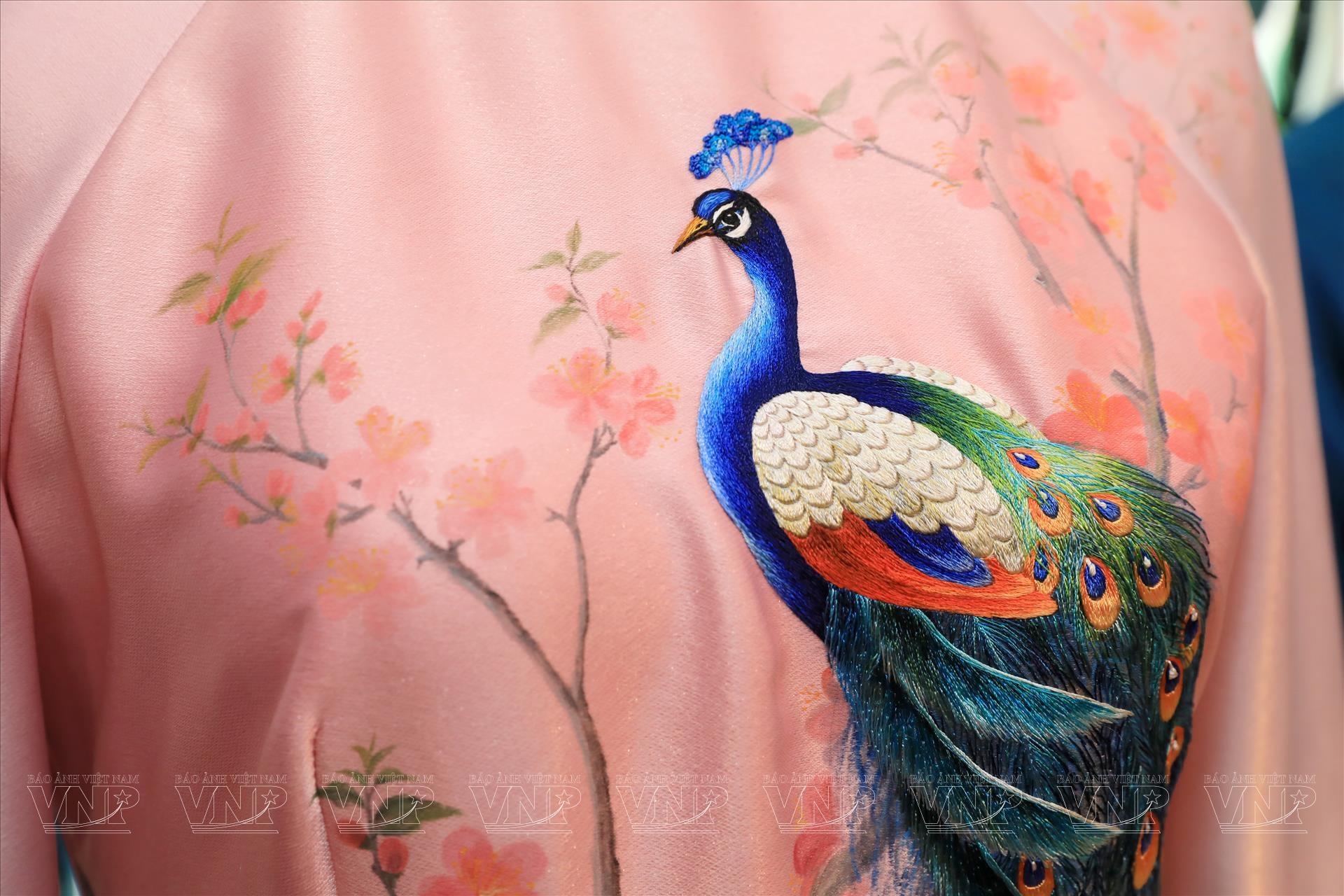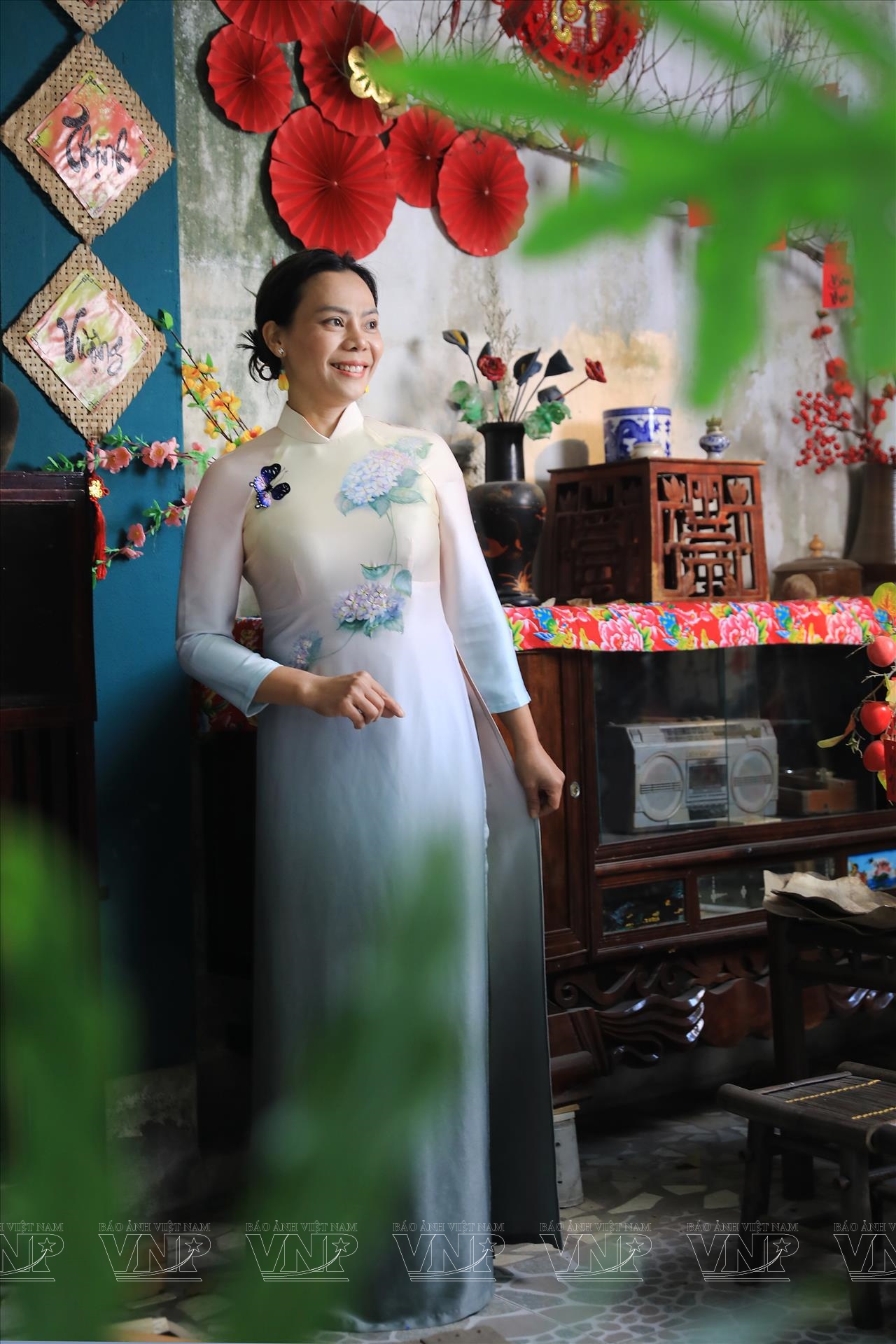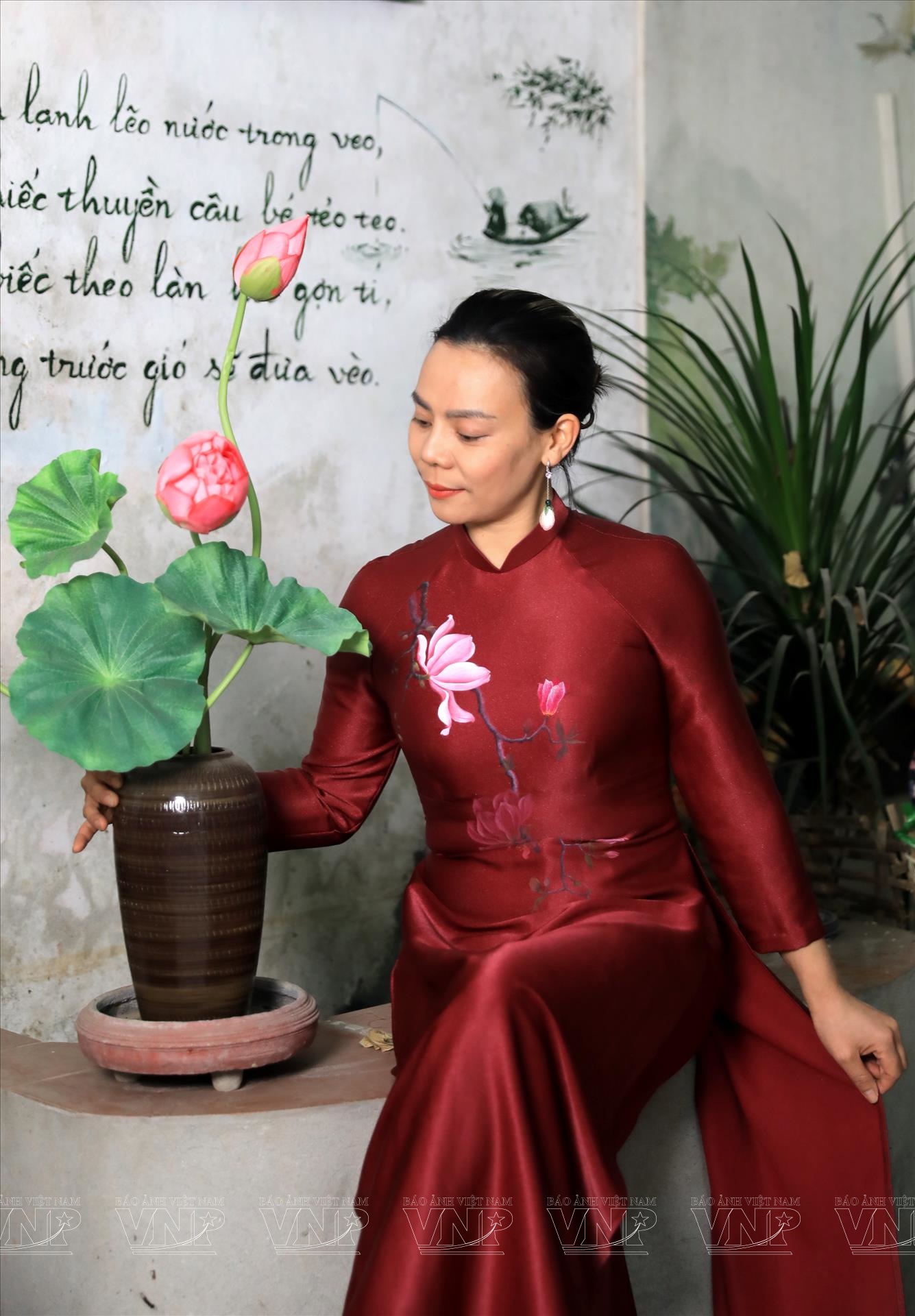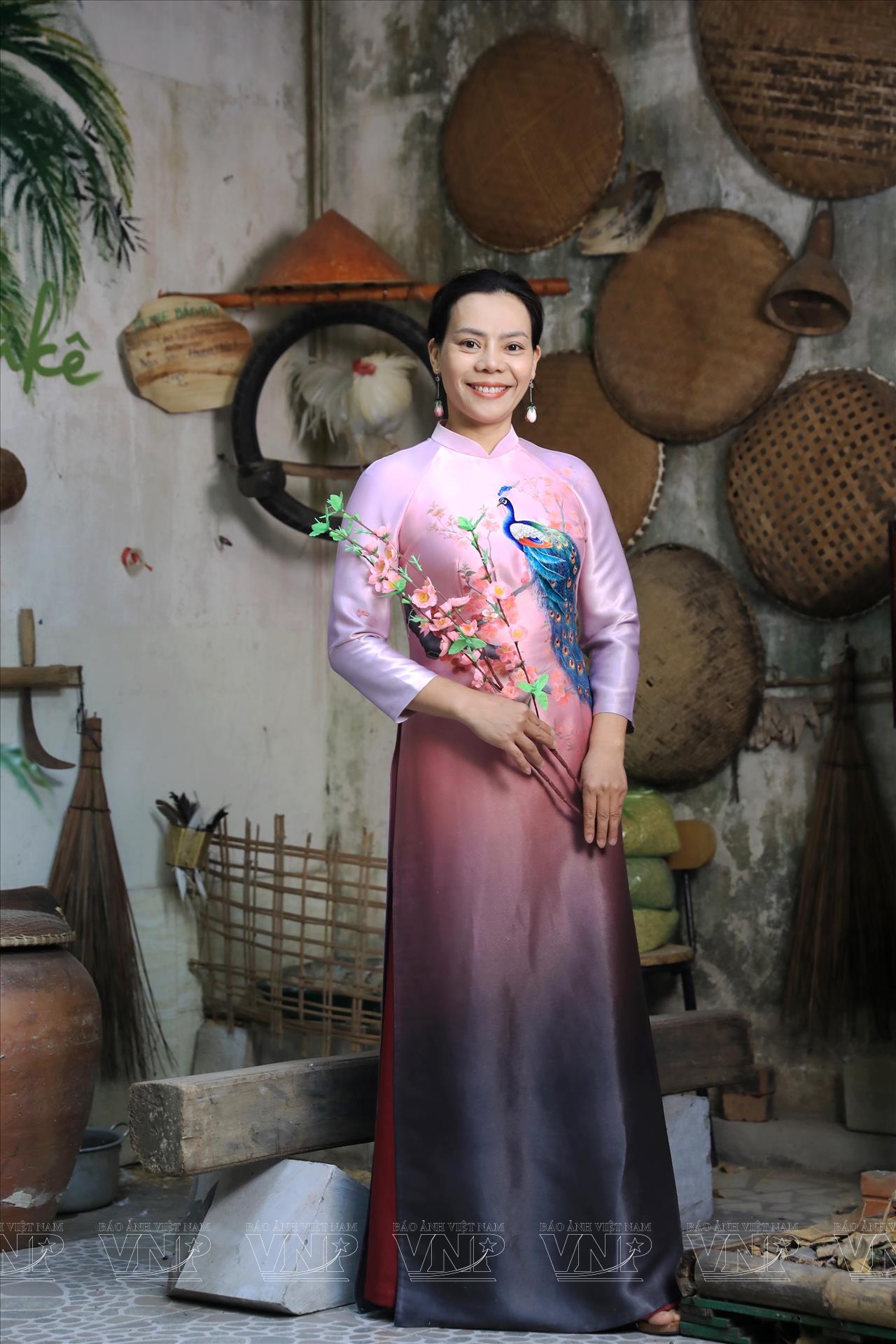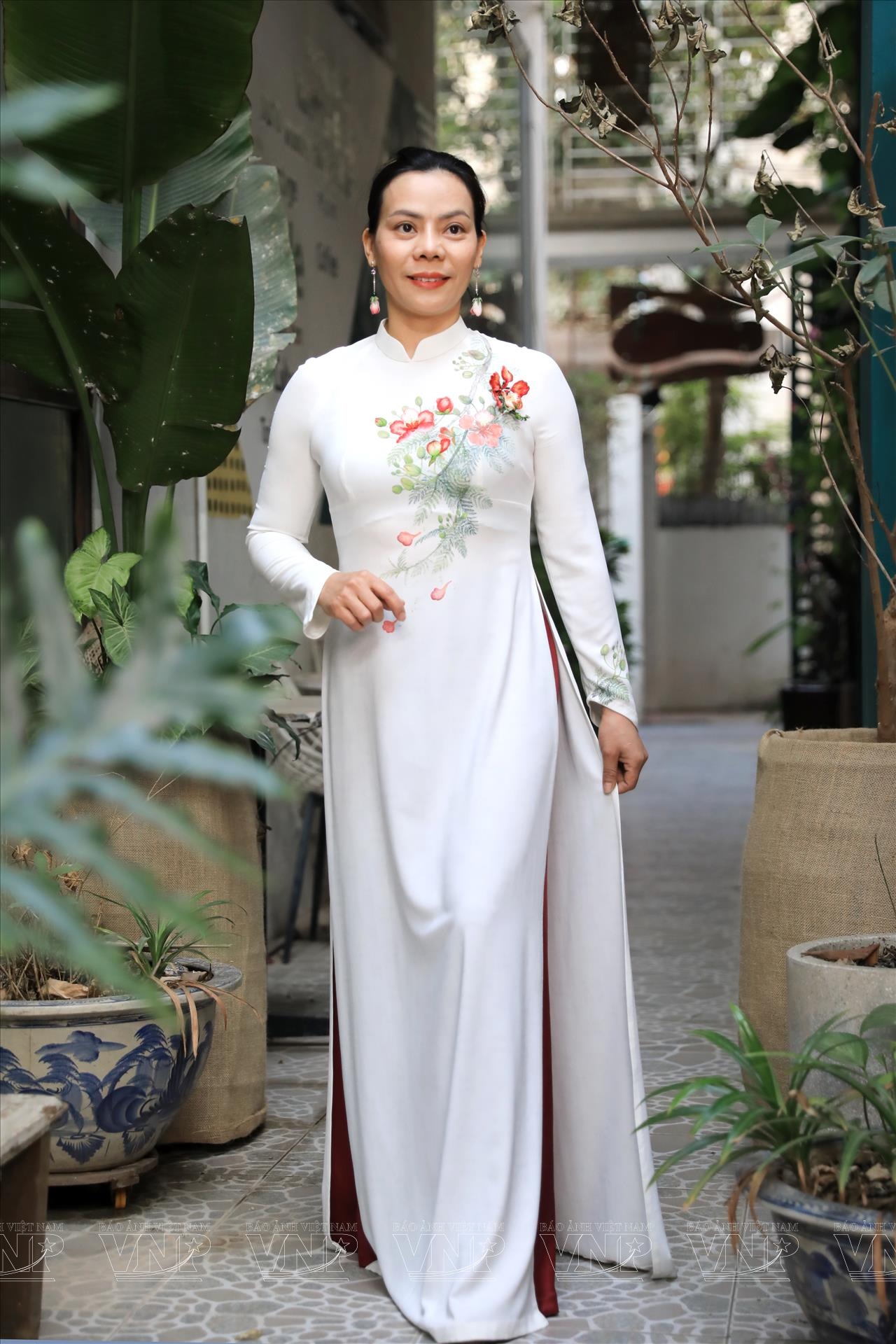Nguyen Thi Hang and Her Hand-Embroidered Ao Dai
Artisan Nguyen Thi Hang began her sewing career in 2001, but it was not until 2024 that she truly embarked on crafting unique, hand-embroidered Ao dai designs, each imbued with her distinctive artistic touch.
Nguyen Thi Hang said, "Before, I only sewed regular clothes, but because I loved the Ao dai so much, I decided to delve deeper and learn more to share this information with my embroidery students, and most importantly, to create products that truly reflect my personal style".
The special characteristic of Hang's Ao dai designs lies in the fusion of painting and traditional hand-embroidery techniques. With years of experience in embroidery, she does not simply embroider patterns onto fabric. Instead, she applies painting techniques to create depth and light coordination, effectively transforming the fabric into genuine canvases. Beyond technique, she also carefully selects her materials. She prioritizes natural Vietnamese materials like silk, linen, and cotton, which are not only wearer-friendly but also maintain the essential softness required for the Ao dai.
Each Ao dai created by Nguyen Thi Hang is more than just clothing; it's a unique work of art. This is because she does not use pre-made colors but hand-dyes them to create distinct shades, ensuring every design is truly one-of-a-kind. Making an Ao dai is not just about cutting and sewing. For Hang, the most challenging aspect is creating a form that enhances the wearer's beauty while skillfully concealing any imperfections. Hang explained, "Every person has a different physique. I must be subtle in how I take measurements, arrange patterns, and even choose the fabric to naturally accentuate the wearer's curves".
One technique Hang particularly cherishes is the arrangement of patterns to be both artistic and functional in concealing flaws. This demands keen observation and a sensitive understanding of the wearer's body shape. Among her Ao dai creations, Hang has dedicated significant research to the traditional Ao ngu than (a five-flap robe).
"This type of Ao dai carries profound cultural value, requiring absolute balance in its form and pattern composition. The challenge is how to preserve its traditional essence while simultaneously expressing a modern aesthetic," Hang said.
Beyond her role as an artisan, Hang is also dedicated to teaching aspiring designers the art of hand-embroidery. She has taught nearly 500 students, both online and in her workshop. Hang commented, "When teaching embroidery and painting on fabric to my students, I also learn so much from them, especially those who are professional Ao dai designers. Each person brings a new perspective and different techniques".
The patterns on Hang's hand-embroidered Ao dai are not limited to flowers and plants. They also depict cultural and historical landmarks from various regions like Hanoi, Truong Tien Bridge in Hue, stalactites in Vietnamese caves, the scenic beauty of Ninh Binh, and the terraced fields of the Northwest. These images are recreated by Nguyen Thi Hang with needle, thread, and paint, each infused with reverence, allowing wearers to feel a deep pride for their homeland.
Priced from a few million to 10 million dong (approximately 80 - 385 US dollars), depending on the complexity and the time required (ranging from a few days to several months per product), Nguyen Thi Hang's hand-embroidered Ao dais cater to customers such as civil servants and those who cherish the traditional Ao dai./.
Story: Ngan Ha Photos: Thanh Giang/VNP Translated by Hong Hanh

